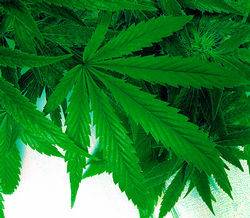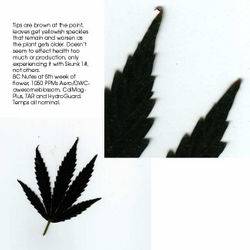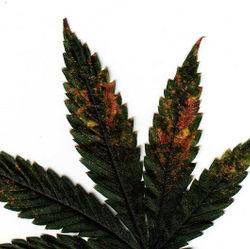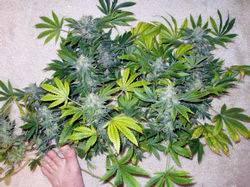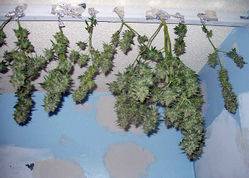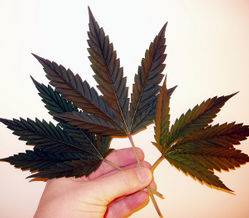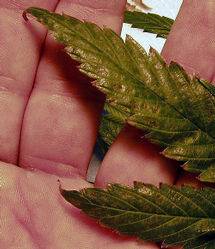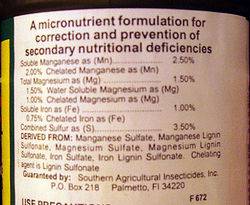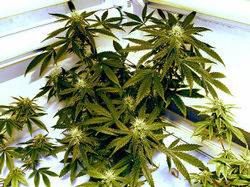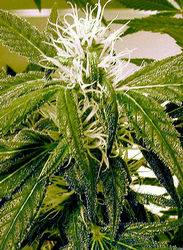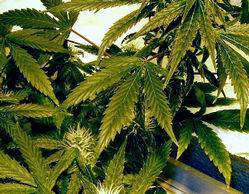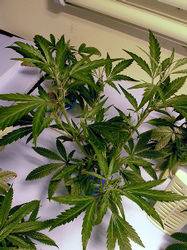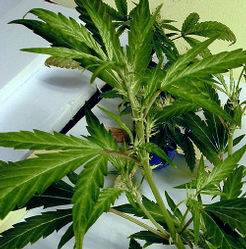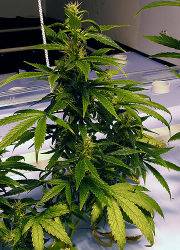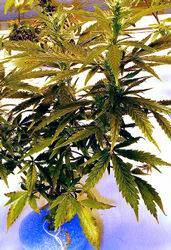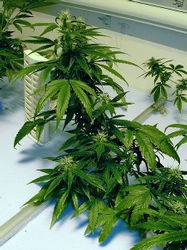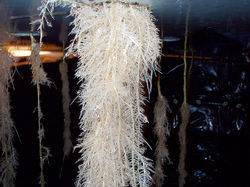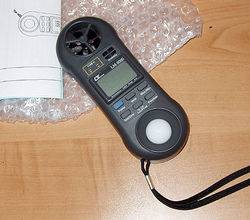G
Guest
Alright forgive me for filling the threads again, but...
This was some very interesting information I found concerning my own necrotic patches on my leaves..it does still appear to be a form of K def...can you believe that shit? I'm thinking Mg and P (maybe a little P I've found) but it still seems to be only the major need for K ...wow.
"Potassium (K) deficiency causes slight mottling and brownish-yellow spots on leaf tips. Later there are brownish-yellow spots on leaf tips. Later there are brownish-yellow spots along leaf margins that become necrotic and fall out, leaving a ragged appeareance. Leaves may be puckered, with the tips and margins curled downward. Symptoms first appear on lower leaves in young plants and upper leaves on older plants. Symptoms are more acute on rapidly growing plants and may be accentuated by excess N. Excess K does not causes visible symptoms."
Which means you can't 'burn' with too much K doesn't it? hmmmmm
"Magnesium (Mg) deficiency, sometimes called “sand drown,” occurs primarily on sandy soils during seasons of excessive rainfall. The first symptom of deficiency is loss of green color from lower leaves. On individual leaves it begins at the tips and margins and proceeds toward the base and center. Interveinal tissues become chlorotic while veinal areas remain green (photo). In extreme cases, lower leaves turn almost white and chlorotic symptoms progress to higher leaves. (Note this) Mg deficient leaves rarely develop necrotic spots. It may occur at any stage of growth but occurs most often following rapid growth during the leaf production phase (4-8 weeks after transplanting). (Note this) High rates of K and/or Ca on low Mg soils may enhance Mg deficiency."
Interesting points to remember.
Here is an example of a Mg def, with no burning.
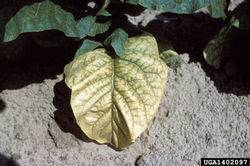
And here K def with burning..
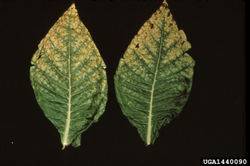
"Symptoms of K deficiency in tobacco first appear on lower or middle leaves and move up the plant as the problem becomes more severe. The distinguishing characteristic is mottled or "scorched" appearance that develops at the tips and along the edges of leaves. In the early stages, mottles are pale green or yellow, followed by the development of brown or dead centers. As the deficiency increases, mottles tend to run together and the dead areas fall out resulting in ragged leaf margins. Because the remaining green areas continue to grow, leaves often develop a crumpled or puckered appearance with edges cupping downward. K deficiencies appear to be encouraged by dry weather. Also, tobacco is usually less stunted by a deficiency of K than by a deficiency of either N or P."
This was some very interesting information I found concerning my own necrotic patches on my leaves..it does still appear to be a form of K def...can you believe that shit? I'm thinking Mg and P (maybe a little P I've found) but it still seems to be only the major need for K ...wow.
"Potassium (K) deficiency causes slight mottling and brownish-yellow spots on leaf tips. Later there are brownish-yellow spots on leaf tips. Later there are brownish-yellow spots along leaf margins that become necrotic and fall out, leaving a ragged appeareance. Leaves may be puckered, with the tips and margins curled downward. Symptoms first appear on lower leaves in young plants and upper leaves on older plants. Symptoms are more acute on rapidly growing plants and may be accentuated by excess N. Excess K does not causes visible symptoms."
Which means you can't 'burn' with too much K doesn't it? hmmmmm
"Magnesium (Mg) deficiency, sometimes called “sand drown,” occurs primarily on sandy soils during seasons of excessive rainfall. The first symptom of deficiency is loss of green color from lower leaves. On individual leaves it begins at the tips and margins and proceeds toward the base and center. Interveinal tissues become chlorotic while veinal areas remain green (photo). In extreme cases, lower leaves turn almost white and chlorotic symptoms progress to higher leaves. (Note this) Mg deficient leaves rarely develop necrotic spots. It may occur at any stage of growth but occurs most often following rapid growth during the leaf production phase (4-8 weeks after transplanting). (Note this) High rates of K and/or Ca on low Mg soils may enhance Mg deficiency."
Interesting points to remember.
Here is an example of a Mg def, with no burning.

And here K def with burning..

"Symptoms of K deficiency in tobacco first appear on lower or middle leaves and move up the plant as the problem becomes more severe. The distinguishing characteristic is mottled or "scorched" appearance that develops at the tips and along the edges of leaves. In the early stages, mottles are pale green or yellow, followed by the development of brown or dead centers. As the deficiency increases, mottles tend to run together and the dead areas fall out resulting in ragged leaf margins. Because the remaining green areas continue to grow, leaves often develop a crumpled or puckered appearance with edges cupping downward. K deficiencies appear to be encouraged by dry weather. Also, tobacco is usually less stunted by a deficiency of K than by a deficiency of either N or P."
Last edited:

 I am going to pickup some 2.5 gallon jugs of the flower and veg for next grow.
I am going to pickup some 2.5 gallon jugs of the flower and veg for next grow.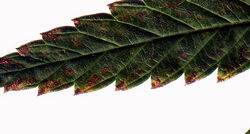
 And pop 48 hrs later roots! It beats 10 days of vegging veg cuts. That was what I meant, my flowering clones would surpass my veg clones to the point I'd toss the veg clones and just run with the re-vegged. If that makes any sense.
And pop 48 hrs later roots! It beats 10 days of vegging veg cuts. That was what I meant, my flowering clones would surpass my veg clones to the point I'd toss the veg clones and just run with the re-vegged. If that makes any sense. 

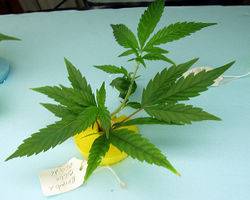
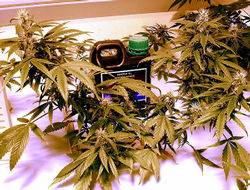
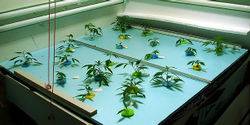

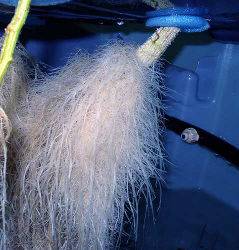
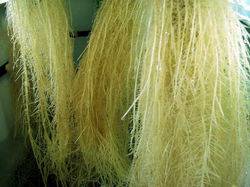

 You know, I always have one freak mutant in every grow I swear. My first FAG I had a monster Oasis from hell (god loved that bitch), the WonderTwins saw Clone 8 (the mercilous) and now the PeaceKeeper Cinnatree. Its like one plant is always just a little too close to the reactor plant.
You know, I always have one freak mutant in every grow I swear. My first FAG I had a monster Oasis from hell (god loved that bitch), the WonderTwins saw Clone 8 (the mercilous) and now the PeaceKeeper Cinnatree. Its like one plant is always just a little too close to the reactor plant. 
